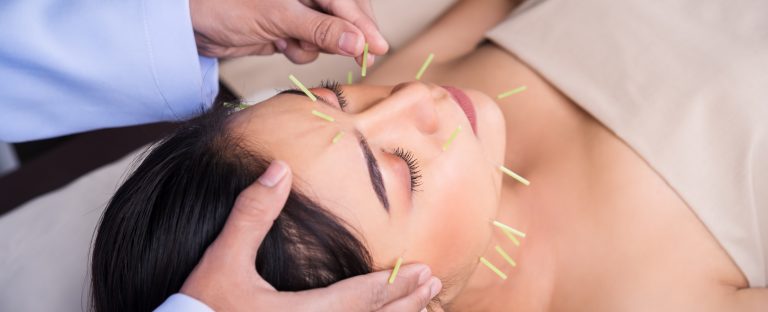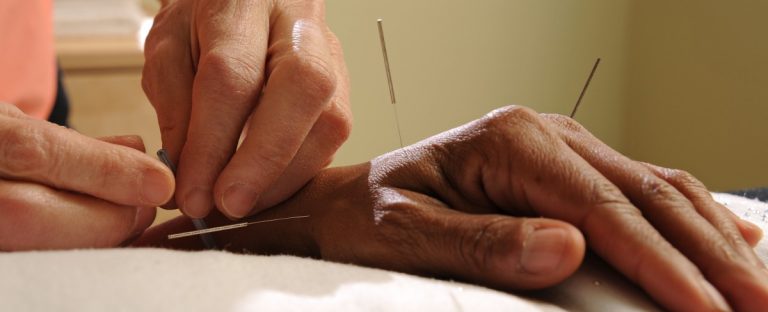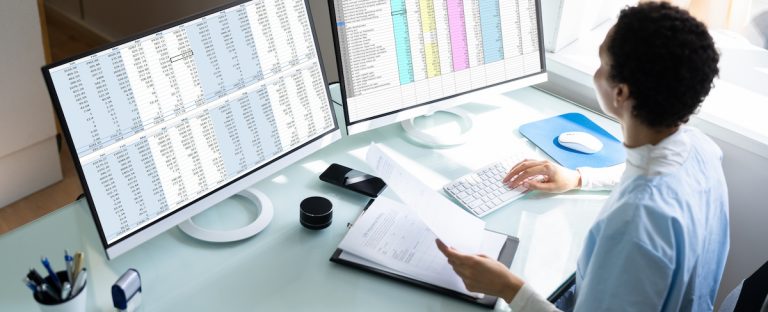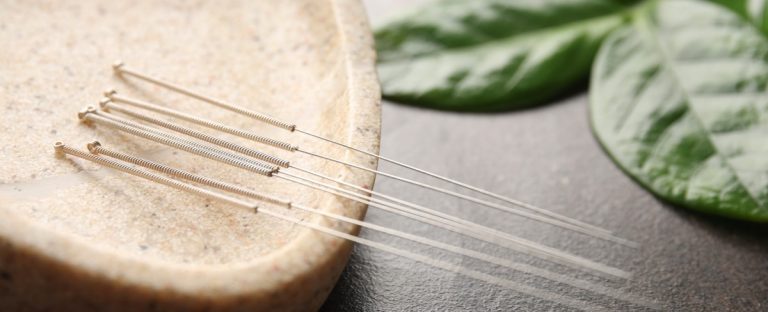Opening a holistic medicine practice can be a rewarding and fulfilling experience, but it is also a significant financial investment. As a healthcare consultant, I want to share some critical business advice and tips for opening your first practice.
First and foremost, it is essential to have a clear and comprehensive business plan in place before you start. This plan should include a detailed budget outlining the costs associated with opening and running your practice and projected income and cash flow, including a marketing plan and a strategy for acquiring and retaining patients. A solid business plan will help you secure funding from a bank or investors and serve as a roadmap to guide your business decisions and practice growth.
Another essential piece of advice is to keep detailed financial records. This is especially important when it comes to taxes and compliance. As a holistic medicine practitioner, you must stay up-to-date on the latest laws and regulations, and having accurate financial records will make this process much more manageable. Additionally, keeping detailed records will help you identify areas where you can improve your financial performance and make adjustments as needed.
One of the most significant financial decisions you will make before opening your doors is how to structure your business. There are several options: sole proprietorship, partnership, limited liability company (LLC), and corporation. Each has its advantages and disadvantages, so it is essential to consult an attorney and accountant to determine the best fit for your practice.
Another important consideration is how you will finance your business. Depending on the size and scope of your practice, you may need to secure funding from a lender or investor. I think having a solid financial plan in place, including a detailed budget and projected cash flow, is essential to show potential lenders and investors that you have thought through the financial aspects of your new practice. Also, you will need to clearly understand your creditworthiness and be prepared to provide the necessary documentation to secure funding.
Additionally, stay on top of your cash flow. This is especially important when starting your practice, as you will likely have a lot of upfront costs and may still need a steady income while you fill your schedule. A clear understanding of your cash flow projections and having a plan in place for dips in cash frequently is the difference in making it to the second year of your practice.
Finally, it is essential to have a good handle on your pricing strategy. As a holistic medicine practitioner, you will provide a unique and valuable service, but you will also need to be competitive with other practitioners in your area. It is essential to research the prices of similar modalities in your area and to have a pricing strategy that is both competitive and profitable. Additionally, you will need to consider logistics like: billing insurance for your services, how you bill your clients, and what payment methods you will accept.
In conclusion, opening a holistic medicine practice can be a fulfilling and rewarding experience, but it is also a significant financial investment. By following these tips, you can ensure that your practice is financially sound and successful. Remember to have a clear and comprehensive business plan, stay organized and keep detailed financial records, understand the laws and regulations associated with your profession, and have a solid pricing strategy. Good luck with your new practice!
Acupuncture has been around for thousands of years and has steadily gained popularity as a complementary and alternative medicine (CAM) for various health conditions. The World Health Organization (WHO) recognizes acupuncture as a safe and effective treatment for multiple conditions, including pain, infertility, and addiction. As we move into 2023, several trends in acupuncture are expected to become more prominent in the healthcare industry and here are the top 5 business trends in Acupuncture for 2023.
Integrative Care
One of the most significant trends in acupuncture is the integration of acupuncture into conventional healthcare. Many hospitals and clinics now offer acupuncture services as part of their treatment options, recognizing the benefits of incorporating CAM therapies into traditional healthcare and being covered by many healthcare plans. This trend is expected to continue into the new year, with more healthcare organizations recognizing the benefits of acupuncture and incorporating it into their treatment plans.
Acupuncture for Addiction
Acupuncture has been used for centuries to help with addiction, and this trend is expected to continue in the new year. Acupuncture is used in the treatment of addiction to alcohol, opioids, and tobacco. In 2023, we expect to see more practitioners specializing in addiction acupuncture to support those struggling with addiction.
Acupuncture for Mental Health
Acupuncture has long been recognized as an effective treatment for physical conditions, but it is also becoming increasingly popular for mental health conditions. Studies have shown that acupuncture can effectively treat anxiety, depression, and PTSD. As the role of patients’ mental health grows, we expect to see more practitioners specializing in mental health conditions.
Acupuncture for Pregnancy and Fertility
Acupuncture has been used for centuries to help with fertility and pregnancy. Studies have shown that acupuncture can increase the chances of conception and improve the chances of a healthy pregnancy. We forecast growth in practitioners specializing in fertility and pregnancy acupuncture as more couples turn to acupuncture as a natural and holistic approach to fertility and pregnancy.
Acupuncture for Pain Management
Acupuncture has long been used as a treatment for pain management. Acupuncture effectively treats chronic pain conditions such as fibromyalgia, migraines, and lower back pain. In 2023, we can expect more practitioners specializing in pain management using acupuncture to relieve patients suffering from chronic pain. However, insurance coverage for acupuncture will only expand meaningfully when the Center for Medicare and Medicaid Services expands its coverage to include licensed acupuncture physicians as eligible providers.
As a safe and effective alternative treatment, acupuncture will continue to grow in popularity. With an expanding body of research supporting the effectiveness of acupuncture, the practice will continue to gain recognition and acceptance as a valuable complementary and alternative medicine.
When it comes to expanding government coverage of holistic and complementary treatments, the task of getting everyone on board can be tedious and take years for legislative consideration.
Delivering substantial and comprehensive evidence of the benefits of holistic treatments, however, does help streamline the process and make a compelling case for incorporating integrative medicine into government programs and private insurance plans. Performing research and providing results that speak to how effective these treatments are for veterans and patients takes time and money, but is ultimately worth it for encouraging the inclusion of holistic treatments.
One such organization that performs research and reports on the results of various healthcare initiatives is the Quality Enhancement Research Initiative, known as QUERI, which operates under the umbrella of the Veterans Affairs department. This organization is instrumental in leveraging a vast network of researchers and investigators around the country to examine a multitude of healthcare actions.
In January 2014, QUERI presented an evidence map of acupuncture that analyzed the effects of acupuncture on mental health, wellness, and pain, plus elaborated on future research efforts and potential drawbacks to this treatment.
More than three years later, acupuncture was adopted into coverage for veterans as included in VHA Directive 1137, published in May 2017. Nearly a year after that Directive was announced, a Qualification Standard was published that permitted licensed acupuncturists to be hired to provide acupuncture care at VA Medical Centers (VAMC) in February 2018.
How did the VA come to the decision to promote acupuncture as part of their benefits for veterans? As with most bureaucratic processes, there were a lot of factors; one key player was QUERI’s evidence map of acupuncture. In this article, we’ll expand on QUERI’s research methods and some of the key takeaways from their report on the effects of acupuncture.
History of the Quality Enhancement Research Initiative for the VA
Founded in 1998 with the mission to “accelerate the use of research evidence, tools, and methods into routine care and ensure U.S. Military Veterans benefit from research discoveries,” QUERI plays a pivotal role in analyzing the effects of healthcare treatments with the ultimate goal of improving care quality and access for veterans.
Since its founding, QUERI has implemented numerous programs and leveraged partnerships to continue expanding care for veterans. Just a few notable examples in recent history include the following:
- National implementation with the VA Office of Mental Health and Suicide Prevention of the Behavioral Health Interdisciplinary Program of team-based care that reduced mental health hospitalizations for Veterans
- Launching several ongoing studies related to COVID, on topics ranging from racial and ethnic disparities in COVID-19 infection and complications to identifying Veterans’ experiences during the COVID-19 pandemic
- Improving Veterans’ experience and quality of virtual care options in VA and community care venues
QUERI’s Strategic Methodology
QUERI’s initiatives operate under a variety of frameworks or roadmaps depending on which facet of the organization you look at; regarding their overarching strategic methodology of operation, they employ a three-fold approach:
- Implement: Enhance Veteran access to cutting-edge, personalized treatments
- Evaluate: Develop mutually beneficial partnerships and inform the rollout of high-priority initiatives
- Disseminate & Sustain: Drive a culture of learning and knowledge translation across the VA as a whole
Pertaining to their research approaches, QUERI leverages a network of more than 200 investigators who have completed more than 500 peer-reviewed studies addressing VA priorities. This rigorous process ensures that research is performed and data is analyzed by those with a high degree of expertise and demonstrated dedication to improving care for veterans.

Key Takeaways From QUERI’s Evidence Map of Acupuncture
Now that we’ve established QUERI’s authority and importance in terms of gathering evidence for important healthcare initiatives for veterans, let’s review a few key takeaways from their evidence map of acupuncture:
Acupuncture Evidence for Pain
QUERI reports with high confidence that acupuncture has a positive impact—or potential positive impact—on several different ailments:
High confidence in the evidence of positive impact:
- Chronic pain
- Migraines
- Headaches
High confidence in the evidence of potential positive effects:
- Dysmenorrhea, also known as severe menstrual cramping
- Cancer pain
- Labor pain
There is also medium confidence in potential positive effects that acupuncture adequately treats pain related to osteoarthritis, pregnancy pain, Temporomandibular joint dysfunction (also known as TMJ), Plantar heel pain, prostatitis, and more.
Acupuncture Evidence for Mental Health
QUERI’s investigation found that acupuncture had the potential for a positive effect on the following mental health conditions:
- Depression
- Schizophrenia
- Anxiety
- PTSD
Acupuncture Evidence for Wellness
This evidence map of acupuncture found acupuncture had the potential for positive effects on a few ailments, including:
- Insomnia
- Smoking cessation
- Postoperative nausea and vomiting (PONV)
- Restless legs
But ultimately there was unclear evidence that acupuncture impacts the following ailments and conditions:
- Cancer AE
- IBS
- PMS
- Menopausal symptoms
- Overall quality of life
While there have been significant studies on the effectiveness of acupuncture in more recent years, understanding this fundamental acupuncture evidence map and its relation to providing coverage to veterans can give insight into the process of increasing coverage for holistic treatments.
Is your acupuncture practice ready to start treating the veterans in your community? Worried about how stressful the medical billing process can be—especially in terms of billing the VA for services rendered? Partner with a medical billing firm!
At Holistic Billing Services, we deal exclusively with holistic healthcare practices that deliver acupuncture, massage therapy, and chiropractic treatments to communities around the country. Whether you have questions on acupuncture insurance billing or other methods to enhance your revenue cycle management, feel free to contact our team today and let us know how we can help your acupuncture practice.
In recent years, there have been tremendous advances in legislation expanding the coverage that Medicare provides to millions of seniors around the country. In particular, expanding coverage to include holistic medicine has been most notable with the recognition—albeit limited recognition—of acupuncture services to treat chronic lower back pain which happened in early 2020. This relationship between Medicare and acupuncture is vital to providing the benefits of holistic treatment to millions of seniors!
About a year and a half later, in July 2021, another piece of legislation was introduced in the 117th Congress: legally classified as HR 4803, the Acupuncture for Seniors Act was written and sponsored by California Representative Judy Chu and would expand Medicare coverage of acupuncture in a few key manners.
Let’s dive into how this Act would impact acupuncture, both as a practice in its own right and in terms of your holistic practice.
HR 4803 Would Expand Medicare Coverage of Acupuncture
The Acupuncture for Seniors Act, known officially as HR 4803, would greatly impact the connection between Medicare and acupuncture by classifying licensed acupuncturists as Medicare providers who are qualified to provide services without supervision.
This kind of recognition from Medicare means that acupuncturists would be able to deliver care to more than 60 million Medicare beneficiaries. Plus, granting Medicare-provider status would streamline the medical billing process because acupuncturists would be able to bill Medicare directly instead of going through the physician-supervised requirement.
HR 4803 defines “qualified acupuncturists” as individuals who have state licensure or are certified by a nationally recognized authority, which helps providers who operate in states without a state license opportunity. Once again, this inclusive definition streamlines the patient-provider relationship and would make all licensed, certified acupuncturists able to serve Medicare patients.
Overall, the Acupuncture for Seniors Act would facilitate cost-effective and high-quality care to millions of people while encouraging the growth and development of acupuncture as a holistic practice and in communities around the country.
Current Status of Medicare and Acupuncture
The current status of Medicare and acupuncture is limited in comparison to what the Acupuncture for Seniors Act would do. At present, Medicare beneficiaries may be treated for chronic lower back pain, defined as:
- Lasting 12 weeks or longer;
- nonspecific, in that it has no identifiable systemic cause (i.e., not associated with metastatic, inflammatory, infectious, etc. disease);
- not associated with surgery; and
- not associated with pregnancy
Medicare will cover up to 12 visits in a 90 day period; if the patient demonstrates improvement, then Medicare will cover an additional 8 visits but treatment is not to exceed 20 treatments in an annual period.
CMS clarifies that “physicians, physician assistants, nurse practitioners/clinical nurse specialists, and auxiliary personnel may furnish acupuncture if they meet all applicable state requirements and have:
- A master or doctoral-level degree in acupuncture or Oriental Medicine from a school accredited by the Accreditation Commission on Acupuncture and Oriental Medicine (ACAOM); and
- current, full, active, and unrestricted license to practice acupuncture in a State, Territory, or Commonwealth (i.e. Puerto Rico) of the United States, or District of Columbia.”
In comparison, HR 4803 would significantly broaden the scope of care and the definition of who can provide acupuncture treatments—a huge win for Medicare and acupuncture!
How This New Bill Would Impact Your Acupuncture Practice
The Acupuncture for Seniors Act would tremendously benefit your acupuncture practice because you’d be able to treat patients with Medicare without the need for physician supervision—plus you’d be able to bill Medicare directly for these treatments.
This means that you can grow your practice to treat a whole population of people with a specific type of coverage that otherwise would have had to pay out of pocket for acupuncture treatments. And the ability to bill Medicare directly for these treatments translates to a streamlined revenue cycle management process for your practice!
Furthermore, this expansion of acupuncture services to be covered under Medicare validates and amplifies your efforts to deliver great care to the members of your community with a non-opioid, non-invasive treatment for pain. Perhaps this is the most important point of it all: providing holistic care that can radically improve patients’ quality of life and effectively function as a prescription alternative.
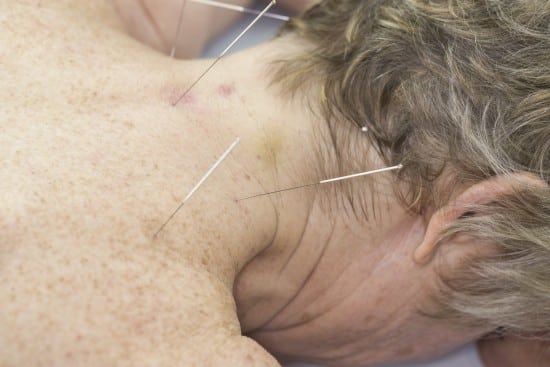
Proven Benefits of Acupuncture Treatments
Acupuncture provides a whole host of benefits, including:
Effective Pain Management
Acupuncture has been recognized for its effectiveness in treating pain, both chronic and acute. In fact, according to the National Institute of Health (NIH), several studies have found that such holistic treatments were proven to reduce pain for a variety of conditions and even manage constant pain such as low-back pain, neck pain, and osteoarthritis/knee pain.
Furthermore, in 2017, the American College of Physicians issued recommendations for treating patients who live with enduring lower back pain, including acupuncture as a proven drug-free treatment plan.
Proven Alternative to Opioid Drug Usage
As providers strive to reduce prescribing opioid drugs to manage pain, patients are directed to therapies like acupuncture as a holistic alternative that maintains an effective pain management quality. This is vital because a recent survey reveals that 49% of people reported knowing someone who has been addicted to prescription opioids; in other words, opioids are not to be taken lightly.
General Health and Wellness Benefits
While the NCCIH notes that acupuncture treatments have been proven to help treat lower back pain, neck pain, osteoarthritis, knee pain, and chronic migraines, the Acupuncture Evidence Project reviewed the effectiveness of acupuncture for 122 treatments over 14 clinical areas and have found some evidence of effect for 117 conditions. These include:
- High or low blood pressure
- Chemotherapy side effects and symptoms associated with it
- Facial pain, including dental pain
Optimize Your Acupuncture Practice’s Revenue Cycle with Holistic Billing Services!
Medicare’s expansion to include acupuncture would provide a huge benefit to your acupuncture practice and could bring in a whole new group of potential patients; how exciting! Want to optimize your practice’s revenue cycle? Partner with an expert medical billing firm!
At Holistic Billing Services, we deal exclusively with holistic healthcare practices that deliver acupuncture, massage therapy, and chiropractic treatments to communities around the country. Whether you have questions on acupuncture insurance billing or other methods to enhance your revenue cycle management, feel free to contact our team today and let us know how we can help your acupuncture practice.
Many acupuncture providers have trouble deciding whether or not to join insurance networks, and what’s right for one practice may not be right for another. There are both positive and negative aspects of joining an acupuncture insurance billing network, depending on your geographic location and your practice’s needs, but understanding the pros and cons requires knowing a little more about HMOs and PPOs, in general.
HMO vs PPO
Broadly, there are two major benefit types: HMO and PPO. While both are types of managed care—which is one way for insurers to help regulate costs—let’s break down what each one entails:
What Is HMO?
To start, HMO stands for Health Maintenance Organization; this kind of coverage restricts patients to a particular group of physicians called a network. In an HMO plan, a patient is typically required to select only doctors and providers from their HMO’s established or predetermined network. In most instances, the patient is required to obtain referrals from their primary care provider (PCP) in order to receive acupuncture treatments.
An HMO limits the amount of freedom that a patient has in choosing where they go for care and they typically have to see their primary physician first before going to another provider or specialist. HMOs don’t normally have annual deductibles and only charge one copay at a time for coverage. In 2022, this type of coverage has a monthly premium of about $457, or nearly $5,500 annually.
What Is PPO?
On the other hand, with PPO plans, a patient has the option to select any providers they like—no referrals needed. They can select providers that are in-network with their insurance, which is preferable since their costs will be lower, or patients can choose to go to doctors that are out-of-network.
Although patients with PPO-level benefits have more freedom in choosing their providers, they also tend to have higher deductibles and coinsurance costs. In 2022, the average monthly cost of a PPO plan is $522, or roughly $6,300 over the course of the year. While this is almost $1,000 more expensive than HMO coverage, it’s all about what the patient prioritizes: less upfront cost of healthcare coverage or more freedom in choosing where they go for their healthcare?
Benefits of Joining a Network
When determining if your acupuncture practice should join an insurance’s network, consider these perks:
Larger Pool of Patients
Joining a particular network enables you to treat both HMO and PPO patients who are covered within that network. If you choose to stay out of an insurer’s network, then your practice is limited to seeing only PPO patients who choose to use their out-of-network liberties that come at a higher cost. Thus, joining a network means that you’ll have a bigger pool of patients to potentially use your acupuncture services.
More Referral Opportunities
Being in-network also enables you to accept more patients who have HMO benefits only. After joining a network, your name and practice information will be posted to the insurance carrier’s website and database, potentially garnering you a larger clientele and more referrals from patients’ PCPs. As more and more Americans continue to turn to holistic medicine as part of their wellness journey, this is a huge opportunity!
Additional Marketing Supplies
When you join an insurance network, you have the ability to leverage that big company name to your advantage. This means that you can advertise that you accept patients who are on that insurance coverage and it can build your reputation as a great practice since you’ve been vetted by a trusted insurance provider. Joining an insurance network results in immediate marketing collateral and the potential to grow your practice!
Challenges of Joining a Network
Just as there are benefits to joining an insurance network, there are also some challenges including:
Lower Fee Schedules
By signing up and agreeing to an insurer’s contract providers in-network, that typically means you’ll get paid at a lower fee schedule than providers who are not contracted. In-network providers also usually cannot bill patients for the remaining portion of a balance for a service that the insurance does not cover.
For instance, if you sent a claim for $120.00 and the insurance paid only $40.00, you would not be allowed to bill the patient for the outstanding $80.00. If you’re out-of-network, you usually have the flexibility and freedom to bill the patient for the difference to make up for any low insurance payments.

Limited Coding Freedoms
Another negative aspect of being contracted into a network is that you could be limited to billing only acupuncture codes, whereas as an out-of-network provider, you can utilize numerous other modality codes. For example, United Healthcare covers Gua Sha services for non-participating providers, but not for in-network acupuncturists.
Shorter Claim Filing Window
Additionally, being a contracted in-network provider often shortens your claim filing time. Usually, providers have a one-year window to submit their claims; a January 1 claim can be processed so long as it’s received by December 31. If you are contracted, however, your timely filing period can be cut down to 3-6 months. That may sound like a sufficient amount of time, but claims can easily fall through the cracks on your side or that of the insurance company.
It’s Tough Work Getting Contracted
Lastly, getting contracted with an insurer is tedious work. You’ll need to fill out a thick packet of questionnaires about your experience, practice, and degree and then give the insurer three months to review and approve your application. After that, you’ll need to revisit your paperwork often and meet the insurer’s particular standards to maintain your in-network status.
How HMO or PPO Impacts Acupuncture Billing
When determining which strategy is best for your acupuncture practice, only you can really make that decision! Your medical billing will look slightly different for each plan and there are advantages—and disadvantages—to both HMO or PPO coverages.
Regardless of what you choose to do, your acupuncture practice will still have to handle medical billing and coding and the overall claims process. Take that burden off of your staff’s workloads by partnering with Holistic Billing Services to streamline your medical billing process and optimize your revenue cycle! Contact us today to learn how we can be an extension of your practice!
The world of insurance billing is complex, and even more so for holistic practices. Accurate coding and billing practices ensure a streamlined reimbursement process so your practice can get paid and deliver the best care to your patients.
Current Procedure Terminology, or CPT codes, are used to document the majority of medical procedures performed by health care providers. These medical billing codes characterize the type of procedure being done so providers can properly bill insurance companies and receive reimbursements for administered services.
Acupuncture practices use codes that correspond to their unique services. Since services are usually coded in 15-minute increments, you will use one code for the initial 15 minutes of service and then a separate code for additional units of time; acupuncture CPT codes will only vary if you include electronic stimulation in your treatment.
Why is Using the Correct Acupuncture Billing Codes Important?
When it comes to holistic practices, ensuring accurate billing and coding is an important indicator of a practice’s financial health since mistakes can result in costly fines and reimbursement delays. Some estimates find inaccurate coding and billing can result in errors on up to 80% of medical bills – resulting in weeks of editing and resubmissions that delay reimbursement and waste time for your staff.
If your holistic practice continues to make mistakes with acupuncture codes, you can have increased denial rates and declining insurance reimbursements, which could put your practice at risk. Accurate acupuncture CPT codes and billing practices can help ensure your holistic practice reaches its full revenue potential.
New Billing Codes for 2022
The American Medical Association (AMA) stated that 43 percent of changes in the 2022 CPT code set are related to new technology services and the expansion of the proprietary laboratory analyses (PLA) code set; 15 codes tied to COVID vaccine procedures were also added.
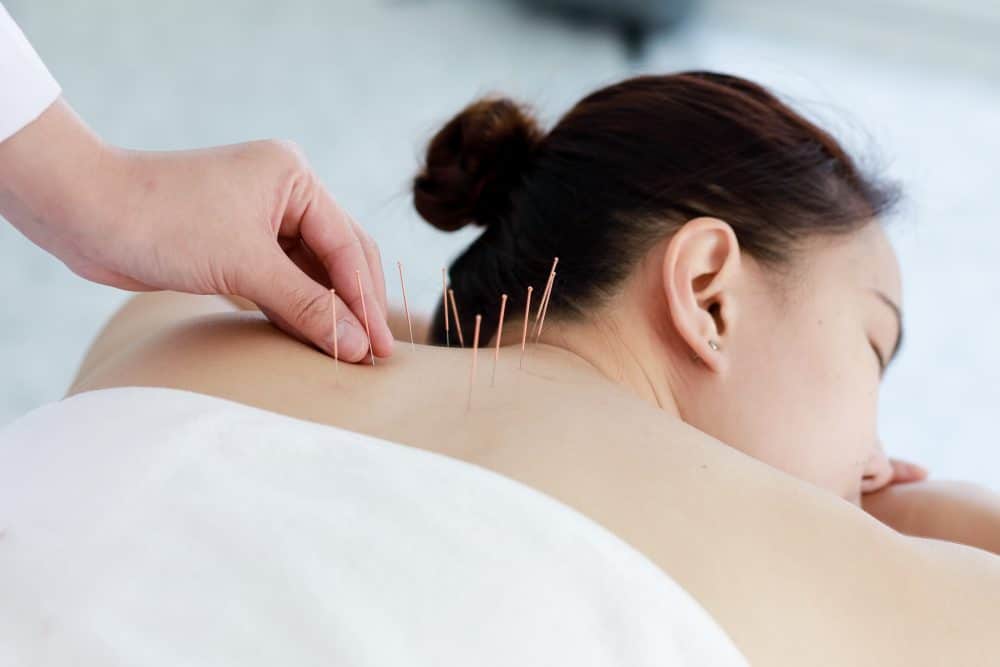 New codes to handle remote therapeutic monitoring were added:
New codes to handle remote therapeutic monitoring were added:
- 98975
- 98976
- 98977
- 98980
- 98981
Plus, new codes for principal care management were included:
- 99424
- 99425
- 99426
- 99427
These codes will allow providers to report care management services for patients with chronic conditions, such as lower back pain, in an effort to improve monitoring these complex health problems.
Top 4 Essential Acupuncture Billing Codes
The bulk of the services you will bill to insurance will likely fall under four essential acupuncture CPT codes. Since acupuncture services are always billed in 15-minute increments, your practice will use one code for the initial 15 minutes of service and then a separate code for additional units of time. Your acupuncture billing codes will only vary if you include electronic stimulation in your treatment.
- 97810 Initial Acupuncture: Initial 15-minute insertion of needles, personal one-on-one contact with the patient. (Do not report in conjunction with 97813; use one or the other.)
- 97811 Subsequent Unit of Acupuncture: Use one unit per each additional 15 minutes of personal one-on-one contact with the patient after the initial 15 minutes, with re-insertion of needles. (May be used in conjunction with either 97810 or 97813)
- 97813 Initial Acupuncture with Electrical Stimulation: Initial 15-minute insertion of needles, personal one-on-one contact with the patient. (Do not report in conjunction with 97810; use one or the other.)
- 97814 Subsequent Unit of Acupuncture with Electrical Stimulation: Use one unit per each additional 15 minutes of personal one-on-one contact with the patient, with re-insertion of needles. (May be used in conjunction with either 97810 or 97813)
Acupuncture Billing Codes for Medicare
January marks the two year anniversary of Medicare expanding their coverage options to include acupuncture for treating chronic lower back pain. CPT codes related to billing Medicare for acupuncture treatments are as follows:
- 97810: Acupuncture, one or more needles, without electrical stimulation, initial 15 minutes of personal one-on-one contact with the patient
- 97811: Each additional 15 minutes of personal one-on-one contact with the patient, with re-insertion of needles
- 97813: Acupuncture, one or more needles, with electrical stimulation, initial 15 minutes of personal one-on-one contact with the patient
- 97814: Each additional 15 minutes of personal one-on-one contact with the patient, with re-insertion of needles
- 20560: Services with needle insertion(s) without injection(s) of 1 or 2 muscle(s)
- 20561: Services with needle insertion(s) without injection(s) of 3 or more muscle(s)
Prices will depend on the region of your holistic practice; look up specific codes based on your location here.
Codes for Patients
Medical billing codes for patients can be broken down into two categories, new and returning patients:
New Patients Billing Codes
Use these acupuncture CPT codes for when your holistic practice receives new patients. As a reminder, a new patient is defined as a patient who hasn’t received professional services from you or another provider of the same specialty who has belonged to your practice within the past three years.
- 99201 Evaluation/Management (Limited): Presenting problems are self-limited or minor: requires a problem-focused history, problem-focused examination, and straightforward medical decision-making; the provider typically spends 10 minutes face-to-face with the patient
- 99202 Evaluation/Management (Expanded): Presenting problems are of low to moderate severity; requires an expanded problem-focused history, an expanded problem-focused examination, and straightforward medical decision-making; the provider typically spends 20 minutes face-to-face with the patient
- 99203 Evaluation/Management (Detailed): Presenting problems are of moderate severity; requires a detailed history, a detailed examination, and medical decision-making of low complexity; the provider typically spends 30 minutes face-to-face with the patient
- 99204 Evaluation/Management (Comprehensive): Presenting problems are of moderate to high severity; requires a comprehensive history, a comprehensive examination, and medical decision-making of moderate complexity; the provider typically spends 45 minutes face-to-face with the patient
Returning Patients Billing Codes
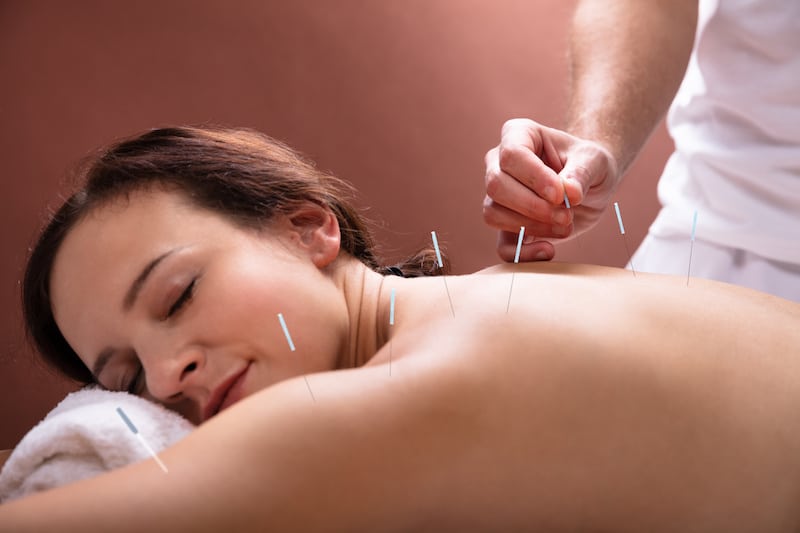
These CPT codes for acupuncture can be used for your established patients. Returning patients are those who have received any professional services from you or another provider of the same specialty who has belonged to your practice within the past three years
- 99211 Evaluation/Management (Minimal): Presenting problems are minimal; the provider typically spends five minutes face-to-face with the patient
- 99212 Evaluation/Management (Limited): Presenting problems are self-limited or minor; requires a problem-focused history, a problem-focused examination, and straightforward decision-making; the provider typically spends 10 minutes face-to-face with the patient
- 99213 Evaluation/Management (Expanded): Presenting problems are of low to moderate severity; requires an expanded problem-focused history, expanded problem-focused examination, and medical decision-making of low complexity; the provider typically spends 15 minutes face-to-face with the patient
- 99214 Evaluation/Management (Detailed): Presenting problem(s) are of moderate to high severity; requires a detailed history, a detailed examination, and medical decision-making of moderate complexity; providers typically spend 25 minutes face-to-face with the patient
Acupuncture CPT Codes for Physical Therapy Treatments
Acupuncture practices use a variety of treatments and modalities to help their patients. These treatments and modalities help strengthen, relax, and heal muscles. Below are a few commonly-used acupuncture CPT codes your practice may encounter.
- 20550 & 20551 Tendon Injection: Single tendon injection for the treatment of fasciitis. Could include multiple injections into a single tendon sheath (CPT code 20550) or the tendon origin (CPT code 20551)
- 20552 & 20553 Muscle Injection(s): Injections involving single or multiple trigger points. Could be used to treat one or two muscles (CPT code 20552) or three or more muscles (CPT code 20553)
- 97010 Heat Therapy: Application of a modality to one or more areas; hot or cold packs
- 97016 Cupping: The use of a vasopneumatic device may be considered reasonable and necessary for the application of pressure to an extremity for the purpose of reducing edema
- 97026 Infrared Therapy: The application of infrared therapy is considered medically necessary for patients requiring the application of superficial heat in conjunction with other procedures or modalities to reduce or decrease pain/produce analgesia or reduce stiffness/tension, myalgia, spasm, or swelling
- 97110 Therapeutic Exercise: One or more areas, every 15 minutes; therapeutic procedures to develop strength and endurance, range of motion, and flexibility with direct (one-on-one) patient contact
- 97112 Neuromuscular Reeducation: Treatments to restore movement, balance, coordination, kinesthetic sense, posture, and/or proprioception for sitting and/or standing activities with direct (one-on-one) patient contact
- 97140 Manual Therapy: Techniques such as mobilization and manipulation, manual lymphatic drainage, and manual traction, one or more regions, every 15 minutes with direct (one-on-one) patient contact
- 97124 Massage Therapy: Includes effleurage, petrissage, and/or tapotement (stroking, compression, percussion) with direct (one-on-one) patient contact
- 97530 Kinetic Activities: Use of dynamic activities to improve functional performance, every 15 minutes with direct (one-on-one) patient contact
Improve Your Acupuncture Practice’s Billing Processes and Revenue Cycle Management with HBS!
Documenting and billing the right acupuncture codes for insurance reimbursement can be a time-consuming process. No acupuncture practice wants to spend more time billing and coding than it does treating patients and expanding its practice. That’s where an experienced medical billing company with acupuncture CPT code experience can be an invaluable partner.
The team at Holistic Billing Services understands the unique needs of acupuncture practices and has extensive experience working with acupuncture codes to ensure you’re billing patients and insurance companies correctly. With our help, you can start seeing patients covered by insurance quickly and painlessly, no matter what type of acupuncture services you offer.
To learn more about how Holistic Billing can help streamline your practice and accelerate your revenue cycle management, contact our team today.
As demands for holistic medicine increase from people seeking relief from a variety of conditions, more research is conducted to determine and affirm how effective these treatments can be. These studies are important both for validating the effectiveness of holistic medicine and quantifying how alternative treatments can be used. For example, acupuncture is often incorporated into a wellness plan relating to a variety of ailments and new research examines just how this practice affects patients with certain chronic illnesses.
3 Common Types of Acupuncture
Originating from traditional Chinese medicine practices, acupuncture entails inserting thin needles, through a patient’s skin, at strategic points along the body at various depths, which interrupts pain signals throughout the body and thus delivers relief.
There are several types of common acupuncture treatments, including:
Cupping Acupuncture
Cupping involves utilizing special suction cups on the patient’s skin to stimulate blood flow under the cup, which provides relief for a wide array of symptoms ranging from muscle inflammation to arthritis. While cupping alone doesn’t actually involve the use of needles, it’s often used in tandem with needles to deliver deep relief.
Scalp Acupuncture
This particular form of acupuncture is self-explanatory in that it involves specifically placing needles along the patient’s scalp at certain points and has been known to manage spinal and motor-impairment issues.
Body Acupuncture
Body acupuncture entails—you guessed it—placing needles all along a patient’s body to supply relief in an all-over manner that can be used to treat a plethora of conditions as well as deliver stress relief.
Benefits of Acupuncture
Since acupuncture treatments can be entirely customized to each patient, there are several benefits inherent to the practice, such as:
Proven Alternative to Opioid Drug Usage
While almost two-thirds of Americans have been prescribed an opioid for pain issues, 49% reported knowing someone who has been addicted to prescription opioids; in other words, opioids are not to be taken lightly.
What’s a healthy and effective alternative? Acupuncture. One meta-analysis of almost 18,000 patients across 29 randomized controlled trials found that licensed, precise acupuncture treatments were significantly more effective than the absence of the holistic approach. Acupuncture is a great alternative to such traditional, pharmacological methods of treatment because it’s minimally invasive and doesn’t have any damaging side effects.
Pain Relief
As mentioned earlier in this article, acupuncture treatments are becoming complementary—if not primary—approaches to treating chronic or acute pain. In fact, according to the National Institute of Health (NIH), several studies have found that such holistic treatments were proven to reduce pain for a variety of conditions and even manage constant pain such as low-back pain, neck pain, and osteoarthritis/knee pain.
Furthermore, in 2017, the American College of Physicians issued recommendations for treating patients who live with enduring lower back pain, including acupuncture as an effective drug-free treatment plan. As providers reduce prescribing opioid drugs to manage pain, patients are directed to therapies like acupuncture as a holistic alternative that maintains an effective pain management quality.
Overall Health Benefits
While the NCCIH notes that acupuncture treatments have been proven to help treat lower back pain, neck pain, osteoarthritis, knee pain, and chronic migraines, the Acupuncture Evidence Project reviewed the effectiveness of acupuncture for 122 treatments over 14 clinical areas and have found some evidence of effect for 117 conditions. These include:
- High or low blood pressure
- Chemotherapy side effects and symptoms associated with it
- Facial pain
- Morning sickness due to pregnancy
- Dental pain

New Acupuncture Research On the Effects on Chronic Illnesses
It’s important to conduct research on holistic treatments like acupuncture in order to objectively determine how effective it can be on certain chronic illnesses. Check out these recent studies on a variety of chronic illnesses in relation to acupuncture treatments:
Meniere’s Disease
Researchers recently conducted a study on 30 patients regarding the effects of acupuncture in treating Meniere’s Disease. Results demonstrated that Meniere’s symptoms, including dizziness, tinnitus, and hearing loss, were significantly reduced in all patients with the use of the warm-promotion needling method wherein acupuncturists manipulated needles in a methodical technique to induce desired effects.
Gout
From a sample size of 120 patients, researchers found that combined auricular acupuncture—treatments performed on the patient’s ears—with warm needle acupuncture significantly enhances the efficacy of drug therapy in relieving gout pain, boosting the 82 percent effective rate to 95 percent effective.
TMJ Pain
Research conducted on 60 patients determined that warm needle acupuncture was 93.3 percent effective while standard manual acupuncture was 86.7 percent effective in reducing pain associated with TMJ.
COPD
Acupuncture was proven an effective treatment for patients living with COPD after a study of 62 patients determined this holistic plan reduces small airway obstructions, increases breathing volume, ventilation, overall respiratory function, and exercise tolerance.
Stroke
In a recent study of 60 patients, traditional treatments for stroke patients were found to be more effective in conjunction with acupuncture treatments than without them because acupuncture “increases the thrombolytic effect of urokinase for the treatment of acute cerebral infarction.”
How Educating Prospective Patients Increases Holistic Practice Acquisition
In 2019, the US National Health Council approximated that 133 million Americans were dealing with a “generally incurable and ongoing” chronic illness; of this group, about 40 million were “limited in their usual activities due to one or more chronic health conditions.” Imagine how many individuals in your community are part of these statistics and could benefit from treatment at your holistic practice!
But first, your patients have to have an awareness of your practice and how it can specifically benefit their overall health. That’s why keeping up on recent studies pertaining to acupuncture’s effectiveness on chronic illnesses can be a vital tool in connecting you with your community and speaking directly to prospective patients.
You can spend more time, energy, and resources on staying current on research, educating your community, and ultimately treating patients by taking one easy step: partner with a medical billing firm to manage your revenue cycle!
At Holistic Billing Services, we deal exclusively with holistic healthcare practices that deliver acupuncture, massage therapy, and chiropractic treatments to communities around the country. Whether you have questions on acupuncture insurance billing or other methods to enhance your revenue cycle management, feel free to contact our team today and let us know how we can help your acupuncture practice.
The acupuncture industry has seen many significant changes since the start of 2021. Recent changes in policies are impacting how acupuncturists provide services for Cigna members.
Let’s review what you need to know about the Cigna-ASH policy changes.
What Changed With Cigna and American Specialty Health (ASH)?
American Specialty Health (ASH) is taking over processing and payment for Cigna members for many states. Cigna is no longer credentialing acupuncturists to provide services to members or accepting or processing any claims. They decided to partner with ASH to facilitate all claims for various specialty services, including acupuncture.
If acupuncturists wanted to stay in-network for Cigna members, they needed to join ASH by September 1, 2021. If they did not join ASH, they opted to provide out of network services for Cigna members moving forward.
The Cigna-American Specialty Health Timeline
Acupuncturists are facing some hurdles when it comes to servicing Cigna members. Here’s a brief overview of what happened with ASH taking over claims for acupuncture services within the Cigna network.
- January 2021 — Cigna announced that claims for acupuncture services will no longer be processed by Cigna and will be managed by American Specialty Health (ASH), effective in June 2021.
- This update doesn’t impact California, Oregon, Washington, and Tennessee.
- May 2021 — Cigna and ASH announced an extension of the deadline for joining ASH, moved from June 1 to September 1.
- September 1, 2021 — The deadline for maintaining an in-network status passed on this day.
Now that the deadline has passed, any provider who did not join ASH is no longer considered in-network for Cigna members.
How This Cigna ASH Update Will Impact Your Acupuncture Business
As noted, if you wanted to stay in network for Cigna members, you needed to join ASH before the deadline in early September. But remember, there are a lot of considerations to assess when looking at whether or not joining ASH suits your business needs.
By joining ASH, you’re able to service Cigna members as an in-network provider. This often means you’ll get a lot more patients.
But remember, just staying in network doesn’t mean joining ASH is necessarily valuable for your business. You should review your client base to determine how many patients are coming to you from Cigna.
How are they finding your practice? Are they coming to you because you’re in the network? Or are they simply coming to your practice without any regard for the network?
If joining ASH will get you access to more patients, this decision seems to be pretty simple to make. But you need to remember that ASH rates are impacting how much money you’re going to make for each patient.
In-Network and Out-of-Network Benefits
If you stay within the network for Cigna members, you are held to the amount you can charge. For example, here’s a breakdown of in-network billing:
- $250 total charge
- Fees discounted $75 to $175 for patients using in-network providers
- The plan pays $140, and the patient pays $35.
On the other hand, if you decide to not join ASH, you’re going to be out of network. Here’s a breakdown of billing for out of network:
- $250 total charge
- No discounts for practices that are out of network
- The plan pays $140, and the patient pays the remaining balance of $110.
As you can see, there are pros and cons to both decisions for acupuncturists.
What’s Next for Acupuncture Services for Cigna Members?
Practitioners are either joining ASH or terminating their contacts with Cigna. In fact, many acupuncturists are encouraging their patients who are Cigna members to directly contact Cigna to express their disapproval.
Unfortunately, a lot of small business owners in specialty practices are being put in a difficult situation — either accept ASH’s lowered reimbursement rates to continue providing services for Cigna members or terminate their Cigna contract to opt out-of-network.
So while staying in-network can attract more patients who are Cigna members, you’re making less money per patient at ASH’s current reimbursement rates. And out of network providers can make more per patient, but they likely lose patients who are looking for in-network providers.
Streamline Acupuncture Billing With HBS
Make sure you’re maximizing your acupuncture billing so you can increase your revenue and grow your business.
Holistic Billing Services is an experienced acupuncture billing provider. Our team can help your practice navigate the intricacies of insurance billing claims to help you hit your revenue goals and reduce the amount of denials.
To learn more about Holistic Billing Services’ acupuncture billing services, talk to one of our billing and coding experts today.
How committed is your team to make your acupuncture practice the best it can be? From your medical billing department to your clinical staff to your front desk reps, everyone involved in day-to-day business around your holistic practice should be motivated to help you become a top-of-the-line medical establishment.
In order to understand how well your acupuncture practice is financially operating, you need to understand which metrics to track. Knowing which key performance indicators to monitor will empower your staff to optimize their work and streamline your acupuncture practice’s overall operations.
Why Does Efficient Acupuncture Billing Matter?
If your holistic practice’s billing staff isn’t diligent with billing practices, mistakes such as upcoding, downcoding, and inaccurate information can go undetected until it’s too late. This can lead to a high number of rejected claims and ultimately impact your practice’s financial future. Ensuring accurate billing and coding can protect your holistic practice from fines and inefficient billing practices that puts your practice at risk.
Every claim that is not paid on the first submission wastes your holistic practice’s valuable time and money. The Medical Group Management Association (MGMA) estimates that the average cost to re-work a claim that has been rejected or denied is $25 for each claim. If your integrative healthcare practice has to rework 100 claims per month, then it costs your practice an average of $2,500 a month to work on unclean claims; that’s an estimated $30,000 a year! 
Additionally, inaccurately submitted claims can result in legal trouble. If your holistic practice submits too many improperly filled out claims, you can be flagged for potential fraud and abuse. The U.S. Department of Justice (DOJ) enforces laws, such as the False Claims Act and Anti-Kickback Statute, to crack down on coding abuse like improperly used modifiers, overcharged services, and more. In fact, fraudulent claims can cost your holistic practice thousands of dollars in fines!
Essential Metrics to Watch for Acupuncture Billing
As the saying goes, knowledge is power. In order to know how well your acupuncture practice is performing, you should investigate the following key performance indicators:
Net Collection Rate
When thinking about your revenue, you may be inclined to focus on gross collection rate – the total of your initial charges before adjustments. But your net collection rate is a better measurement of financial performance and collections effectiveness since it factors in the percentage (after negotiated contract write-offs) of collectible funds that are actually collected by your practice.
A 96% net collection rate is considered ideal across the industry. Anything lower than a 95% clean claims ratio means your holistic practice is losing revenue, which also indicates your holistic practice is wasting further money and time reworking rejected claims. In reality, most holistic practices have a rate that varies between 75% and 85%, which means that somewhere around 15–25% of claims submitted each month have to be worked on twice, at minimum.
Clean Claims Rate
Your holistic practice’s clean claim ratio is the average number of claims paid upon the first submission. Every provider would love to reach a percentage above 95, but it’s about more than just reaching that number – it’s about streamlining your practice!
Holistic practice budgets are tight, and your staff’s time is the most precious resource you have. So if your clean claims rate is less than 85%, it means your staff is likely having to spend extra time on identifying denial reasons, coordinating with payers, and re-submitting claims. Overall, the clean claims rate directly affects your holistic practice’s overall revenue cycle.
Holistic practices should strive for a 95% clean claims rate, however, few practices actually reach that target goal. Most practices receive reimbursements the first time a claim is submitted for approximately 75% to 85% of claims they bill, which means about one-quarter of claims are denied or delayed due to errors or incomplete documentation.
Accounts Receivable (A/R)
Accounts receivable (AR) is the balance of money due to a firm for goods or services delivered or used but not yet paid for by customers. Accounts receivables are listed on the balance sheet as a current asset. AR is any amount of money owed by customers for purchases made on credit.
Days Sales Outstanding (DSO)
This is probably one of the most critical pieces of information you need to obtain in order to run your acupuncture practice; this metric helps you budget your inflow and expenses. This is calculated by taking your A/R at the end of the closed month and dividing it by the charges at the end of the same closed month. You then take that number and multiply it by the calendar days in the same month.
Patient Balance
As with your entire payer mix, like insurance contracts, there should never be a high accounts receivable balance in any given class or insurance type. It’s really a good idea to not carry patient balances on your books for more than 90 days. If you have patient balances over this timeframe, find out why and work to resolve them as soon as possible.
Average Charge Per Visit & Pay Per Visit
Monitoring this self-explanatory metric also helps you keep track of underperformers at your practice. The average charge per visit and pay per visit are great pieces of information to have to set a standard; then, if you fall below this average on any given visit, it’s a good idea to investigate why.
Boost Your Acupuncture Billing Cycle with HBS!
By using these tips to boost your acupuncture practice’s revenue cycle, you’re sure to make the most of your practice’s revenue in the future. However, these tips definitely require time and effort to do it successfully. If you’re in need of expert medical billing services, let Holistic Billing Services be your go-to source for an error-free billing solution.
With decades of experience dealing with a broad range of medical billing issues for all kinds of holistic practices, the team at HBS has seen just about every kind of medical billing error an organization can make. That’s why our clients trust us to help them manage their insurance claims to ensure they’ll be accepted as clean claims on the first attempt, avoiding lengthy back and forth negotiations with the insurance company. And best of all, you’ll avoid the scrutiny of federal and state auditors.
Contact us today to learn about Holistic Billing Services medical insurance billing services and find out how we can help you increase your clean claims rate!
Did you know the healthcare industry loses more than $150 billion a year to no-shows alone? While there are a variety of reasons patients might miss their appointments, like simple forgetfulness or something unexpected taking precedence, it’s in your holistic practice’s best interest to implement a no-show policy. Without one in place, you’re leaving money on the table and wasting your staff’s precious time.
What is a No-Show Policy?
A no-show is when a patient misses their scheduled appointment without informing your holistic practice; this is different from a cancellation, which accounts for the patient communicating their intentions with your practice.
Thus, a no-show policy is the set of guidelines, rules, and penalties that a practice implements to manage patients who intentionally – or unintentionally – miss their appointments. Such a policy discourages your patients from missing their appointments and therefore reduces the adverse impact of no-shows on your holistic practice.
The Effects of No-Show Appointments on Holistic Medical Practices
Simply put, appointment cancellations and no-shows bring only negative consequences to your holistic practice. A missed appointment means no revenue and leaves your knowledgeable staff idle – all cost and no compensation. Precious resources like time and money are wasted when a patient cancels last-minute or doesn’t stick to their appointment, which significantly impacts your practice’s bottom line.
Strategies that aim to overcompensate for no-shows, like overbooking appointments, mean that your holistic practice can’t efficiently allocate its resources; essentially, such approaches can be fiscally irresponsible and result in the burnout of your staff.
What Are The Benefits of Creating a No-Show Policy?
Streamlines the Appointment Cancellation Process
Implementing a no-show policy helps your staff know what to do when patients don’t show up for their appointments. With an established protocol to refer to and communicate with patients, your employees can limit scheduling disruptions, handle follow-ups and rescheduling efficiently, and even fill empty time slots more quickly so your holistic practice won’t miss out on the income potential for that particular time window. 
Discourages Patient No-Shows
Since a no-show policy informs patients of the fees they will incur if they don’t show up, it discourages them from missing their appointments. Without a no-show policy, patients have no accountability whatsoever that will encourage them to go to your clinic.
Boosts Revenue Cycle Management
Ideally, every appointment you set should bring you money. If your patients don’t show up for their appointments, you don’t get paid. The fewer no-shows your practice has, the fewer disruptions there are to your workflows! This means your holistic practice’s patient and team scheduling staff run smoothly since they won’t have to spend extra time overbooking each day in the event of no-show patients. All of this ultimately means you’ll be more profitable since your operations will be better streamlined to account for forgetful patients.
How to Write a No-Show Fee Policy
-
Enable your patients to cancel in a convenient manner
Allow a timeframe for patients to cancel or move their appointments without getting penalized. Life happens, and it helps your patients to have the ability to cancel or reschedule their appointments on their time. When you add an appointment cancellation window in your no-show policy, you show your practice to be understanding and caring. That’s good for business, of course. You don’t want to be viewed as a holistic practice that nickels and dimes its patients!
-
Establish fees for canceling – or to incentivize keeping the appointment
Fees in a no-show policy will help deter patients from missing their appointments since they’ll know how much it’ll cost them; you can also utilize a type of reward system to incentivize patients who keep their appointments! Consider these points when writing your policy:
- Straight fee: Every time patients miss their appointments, they’re charged a no-show fee
- Reward system: Patients who show up on time and keep their appointments can get rewards, such as gift cards or other incentives, depending on your practice.
- Fee erased upon return: A small fee is added to your patients’ bills when they don’t show up for their appointments; however, if patients reschedule and arrive on time, the fee is removed.
-
Explain how your policies are enforced
Besides charging a fee, implement best practices that prevent patients from rescheduling if they exceed a specific number of missed appointments. For example, if you set a no-show limit of three appointments and your patient fails to show up for the fourth time, restrict their online or over-the-phone booking privileges. Be sure to send patient no-show letters to remind repeat offenders of the importance of keeping their appointments, and follow up on patients if they need to reschedule. Doing so discourages patients from missing their appointments without canceling, can minimize no-shows, and can reduce potential costly disruptions to your holistic practice’s workflows.
-
Remind your patients of their appointments
Part of your policy should be outlining a timeline of when the patient will get reminders about their appointments. Patients can sometimes forget their appointments, hence the no-shows. Prevent a good chunk of no-shows by calling patients a few days before their schedule or sending them quick reminders. In your policy, list when these notifications might happen so they can expect to get them.
-
Communicate your policies
Any new policy is only useful if the pertinent parties are aware of it! Ensure your patients know the consequences of missing appointments by communicating your no-call no-show policy. Below are a few common, yet effective, strategies to inform your patients about your policy. 
- Display your no-show policy on your online booking portal so patients know the guidelines and associated fees if they miss their appointments without giving you notice.
- When patients set appointments over the phone, ensure your employees inform them about your no-show policy. Your staff can say something like, “We look forward to seeing you. If you need to cancel your appointment, please do so within the next 24 hours to avoid getting charged the no-show fee of $25.”
- Include your no-show policy on your website so your patients can access it easily. To get more bookings, add a link to your appointment form or include your phone number so your patients can set appointments immediately.
Without a solution in place to reschedule no-shows, improve cancellation management, and fill empty appointment slots, these tasks are wasting your staff’s valuable time. That’s time that could be spent providing a top-notch care experience, making each and every patient feel welcome, or helping patients coordinate care, or answering patient’s non-clinical questions.
Since 1999, Holistic Billing Services has handled coding and billing issues for a variety of healthcare practices. We understand that each practice is unique and requires a customized solution that aligns with its long-term goals and increases its medical billing metrics. That’s why we work closely with our clients to help them set up holistic billing services and solutions that meet their specific needs and allows them to deliver the best care possible. To find out what we can do for your practice, contact our team today for a consultation.


